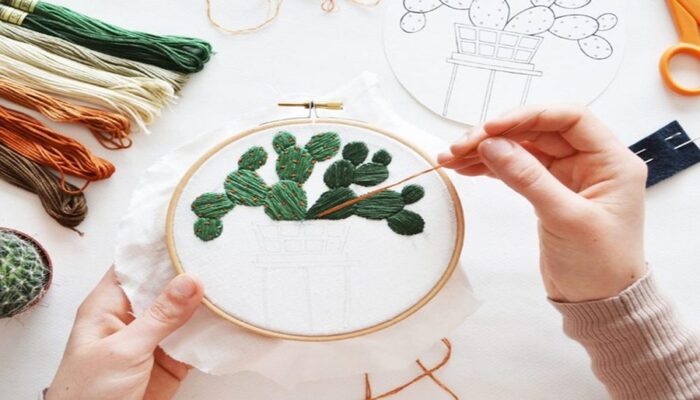Craft skills are more than just a hobby – they’re a gateway to creativity and extra income. Whether you’re crafting jewelry, home décor, or custom clothing, mastering these skills can open doors to endless possibilities.
In South Africa, many are discovering the financial freedom and personal fulfillment that come with turning their craft skills into a business. It’s not just about making things; it’s about making money doing something you love.
Ready to dive into how you can create, sell, and increase your income using your craft skills? Keep reading, and let’s explore how to turn your passion into profit!
1. Mastering Craft Skills: The First Step to Success
Before diving into selling your creations, it’s important to focus on mastering your craft skills. This is the foundation of your business. When your skills are refined, your products will be of higher quality, which can increase their appeal to customers.
Start by learning from others, whether through online tutorials, workshops, or local mentors. There are many resources available in South Africa, both online and offline, that can help you improve your craft.
Remember, the key to building your skill set is consistency. Practicing regularly will not only help you improve but also increase your creativity. As you gain confidence in your craft skills, you’ll discover your personal style and unique selling points.
2. Finding Your Niche
South Africa has a rich cultural heritage, and incorporating local elements into your creations can help you stand out. Whether you focus on traditional crafts or contemporary designs, finding your niche is crucial. For example, you could specialize in beaded jewelry, hand-painted pottery, or woven textiles. This will make your products distinctive and appeal to specific markets.
Additionally, think about your target audience. Who would be interested in your products? Are you aiming for tourists, locals, or perhaps the growing online market? Identifying your target market will help guide your designs and marketing strategies.
3. Selling Your Creations: Where to Start
Once you’ve honed your craft skills and created a range of products, it’s time to start selling. South Africa has a variety of platforms that allow local artisans to showcase their work. You can sell at craft markets, pop-up events, or even from your own home.
Some popular craft markets include the Neighbourgoods Market in Cape Town and the Art in the Park in Durban, where local crafters can display and sell their goods.
In addition to physical markets, online platforms provide a broader reach. Websites such as Etsy, Takealot, and local online shops are ideal places to sell your creations. Setting up an online store gives you access to a global audience, and with the right marketing, your products could gain international recognition.
4. Marketing Your Craft Products
Effective marketing is crucial to increasing your income through craft skills. Social media platforms such as Instagram, Facebook, and Pinterest are invaluable tools for promoting your work. By posting high-quality photos of your products, engaging with followers, and telling the story behind your creations, you can build a loyal customer base.
Using local hashtags and collaborating with influencers or bloggers can also help increase visibility. Many South African crafters have gained success through Instagram, where the visuals speak for themselves. Don’t forget to optimize your online listings with keywords and descriptions that will help potential customers find your products.
5. Pricing Your Products: Finding the Right Balance
When selling your handmade items, one of the most challenging tasks is setting the right price. You need to strike a balance between making your products affordable while ensuring you make a profit. Start by calculating the cost of materials, time spent creating the items, and any additional overheads like shipping and packaging.
It’s also helpful to research your competition. Look at how similar products are priced in the market and adjust accordingly. Remember, your craft skills are what make your items special, so don’t undervalue your work. If you offer exceptional quality and unique designs, customers will be willing to pay a premium for your products.
6. Scaling Your Craft Business
As your business grows, you may want to scale your operations. This could involve hiring additional help, expanding your product line, or increasing your online presence. Scaling requires investment, whether it’s in marketing, materials, or equipment. However, with the right planning and strategy, you can increase your income significantly.
One way to scale your craft business is by offering workshops. Share your craft skills with others and charge for the classes. Not only will this generate additional income, but it will also help you build a reputation as an expert in your field. Many South African crafters have successfully turned their passion into a full-time business by offering workshops and online tutorials.
7. Growing Your Brand
Building a strong brand identity is crucial for long-term success. A memorable brand can help differentiate your products from competitors and establish trust with customers. Your brand should reflect your personality, values, and the story behind your creations. Think about what makes your craft skills unique and how you can communicate that through your branding.
Create a logo, choose a consistent color scheme, and develop a strong message that resonates with your target audience. Your brand should be present across all platforms, including your website, social media, and packaging. Building a brand takes time, but it can significantly increase customer loyalty and boost sales.
8. Financial Management: Tracking Profits and Expenses
Proper financial management is essential for growing your income from craft skills. Keep track of your expenses, sales, and profits to ensure your business remains sustainable. Consider using accounting software or hiring an accountant to help you manage your finances.
Don’t forget to set aside money for taxes. In South Africa, small business owners are required to pay tax, so it’s important to understand your obligations and budget accordingly.
9. Building a Community of Support
As you develop your craft business, remember that networking is key. Join local artisan groups, online forums, and craft organizations to connect with like-minded individuals. These communities can offer support, advice, and opportunities for collaboration. Additionally, forming relationships with suppliers and retailers can help streamline your operations and increase sales.
Networking not only boosts your credibility but can also provide inspiration and encouragement. Many successful South African crafters have built their businesses by fostering relationships within their communities.
10. Continuously Improving Your Craft Skills
The world of crafting is constantly evolving. New trends, techniques, and materials are always emerging, so it’s important to stay informed and continue learning. Attend workshops, read books, and participate in online communities to stay up-to-date with the latest developments in your craft. This will help you stay ahead of the competition and keep your products fresh and exciting.
Additionally, feedback from customers is invaluable. Listen to their suggestions and adjust your designs or products based on their needs and preferences. This will help you build a loyal customer base and increase your chances of success.
Conclusion
South Africa offers a wealth of opportunities for individuals with craft skills to create, sell, and increase their income. By mastering your craft, finding your niche, and effectively marketing your products, you can turn your passion into a profitable business.
Whether you sell locally or globally, the key is to remain committed, continue learning, and build a strong brand. With dedication and creativity, your craft skills can become a lucrative source of income.





